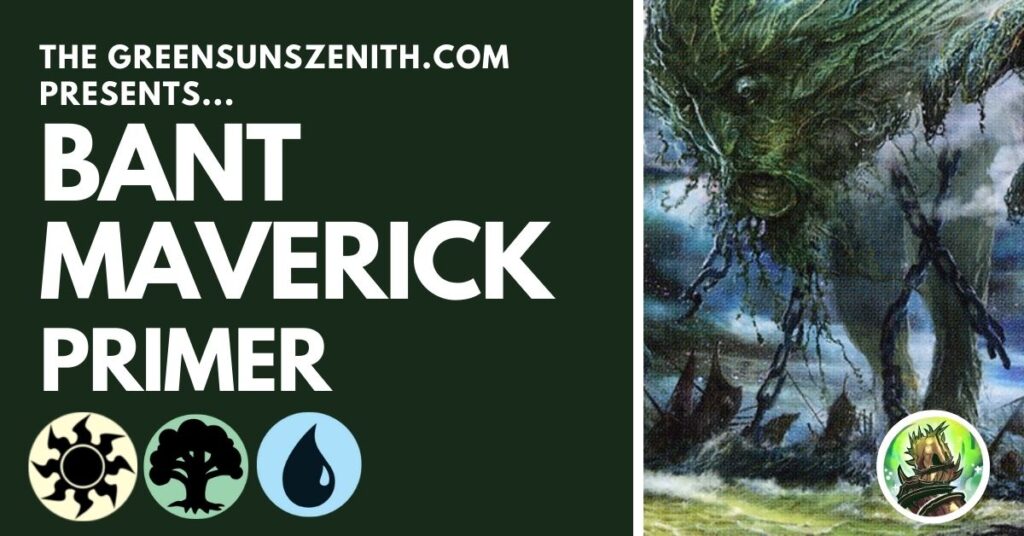Table of Contents
- The history of BANT Maverick
- Where’s BANT Maverick in 2022?
- What is a good starting point for picking up BANT Maverick?
- What does BANT give you access to?
- What are BANT Maverick’s matchups like?
- References & Resources
- Conclusions
BANT Maverick’s History
For the past few years, BANT has always fallen short in Legacy Maverick as a colour combination. BANT has dedicated followers, and from that, some impressive results since the early 2010s from pro-players like Reid Duke and Bryan Hawley. Even after years of new sets, mechanics and inevitable power creep, the core of these builds are very similar to what Maverick looks like today. In short, they utilise the power and consistency of Green Sun’s Zenith alongside silver bullets like Qasali Pridemage, Scavenging Ooze and Gaddock Teeg to make sure you have disruption at the ready for any matchup.
An extensive Green Sun’s Zenith package is how I’d differentiate BANT Maverick from BANT Midrange, Stoneblade and BANT Control. The blue splash also gave you access to more powerful creatures in Rhox War Monk, Meddling Mage and Vendilion Clique, and of course, counter-magic like Mental Misstep, Daze and Force of Will .
Brainstorm was also a part of these lists, which isn’t too common in modern-day BANT Maverick. When looking at recent decklists, Maverick has moved away from maindeck counter-magic and one-mana card selection.
Here’s one of my favorite recorded Legacy matches – the finals of the 2013 StarCityGames Legacy Open, where Reid played a BANT stoneblade list against Ben Friedman on UWR Delver.
Another list that’s definitely worth noting is James Rynkiewicz’s 2011 Grand Prix winning BANT Maverick list.
As usual, this deck utilised Noble Hierarch, Birds of Paradise and Green Sun’s Zenith to accelerate into an early Knight of the Reliquary or Rhox War Monk and apply pressure from as early as turn three.
The deck also played with the now banned Mental Misstep alongside Daze to protect his threats from removal such as Swords to Plowshares and Lightning Bolt. Sadly, creatures like Rhox War Monk have fallen victim to the rise in power level over the years. But it’s a really interesting insight into what Legacy was like back then.
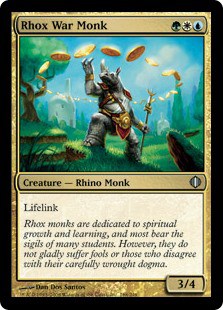
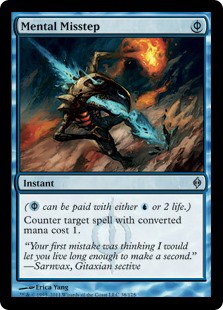

As mentioned above, Brainstorm isn’t a card you see too much of in Maverick these days. But with the extra four-shuffle effects thanks to Green Sun’s Zenith, it seems like it would fit in the deck rather well.
There are times you find yourself wanting tutor targets such as Dryad Arbor or Gaddock Teeg back in the deck rather than in hand, and Brainstorm is the best way to do that. It’s a slippery slope though. When you start adding Brainstorm to the deck, Ponder, Daze and Force of Will aren’t far behind.
Having four Thalia, Guardian of Thraben in the maindeck is a really nice counter and reason for not playing more than just the standard non-creature spells in the deck (Swords to Plowshares, Green Suns Zenith, Oko, Thief of Crowns and Sylvan Library).
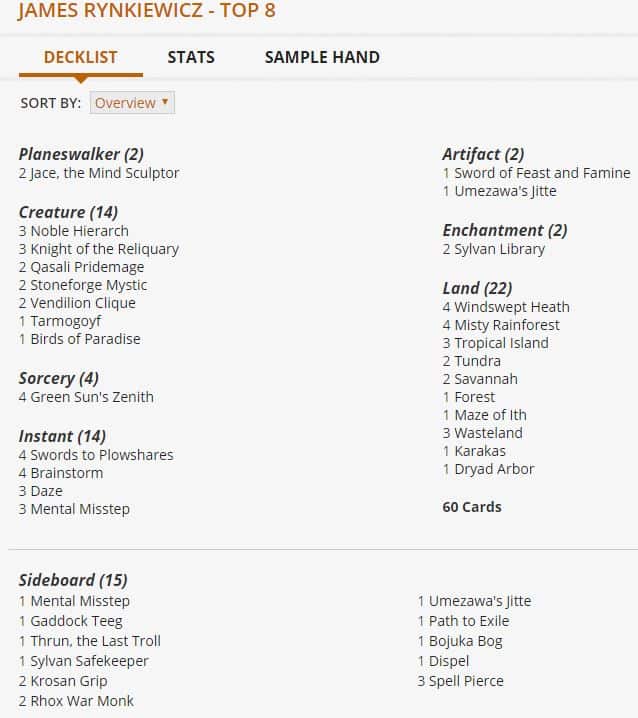
Looking at his list above and the other Top 8 decklists, 2011 looked like a pretty incredible time to be playing Legacy. James had quite a heavy blue-splash running maindeck Jace, the Mind Sculptor, Vendilion Cliques, Daze and Mental Misstep. The manabase also had a high number of blue duals to make sure he was consistency hitting his double-U demands. You can actually find the full coverage of the top 8 including the finals James played in thanks to written Legacy GP coverage.
Now, fast-forward a few years, and we’ve got some new toys to play around with.
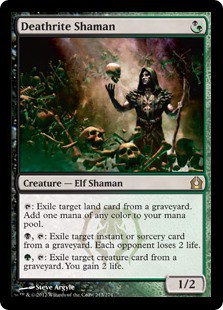

When Deathrite Shaman was legal in the format, it was hard to argue why you wouldn’t be splashing black and piloting a 4C/Dark BANT/Noble BUG midrange list over Maverick. The printing of Leovold, Emissary of Trest pushed the power of the black splash to a whole new level, making 4C decks very appealing for competitive players. With these two in the format, BANT as we knew it faded away from the spotlight it once held.
Oko, Thief of Crowns

In 2019, the printing of Oko, Thief of Crowns was a huge incentive for Maverick players to re-evaluate the blue splash in Maverick and get grinding. Oko had been dominating the Legacy format since its printing and Maverick pilots started to realise they could play it. It creates a tremendously grindy sub-game against creature matchups – essentially fogging enough turns to give its controller time to set up a boardstate or deal with opposing threats. Oko’s Elk ability is pretty nice in a deck playing cards like Knight and Ooze, creatures which are constantly bigger than a 3/3 and create a tough wall to beat through.

So if Oko is so powerful, it must be absurd when you can consistently cast it a turn earlier than most opponents, right?
To cut a long story short, the main reason to play BANT Maverick in Legacy during this period was because the deck could constantly cast Oko on turn two, then protect it with Swords to Plowshares and creatures that are most likely bigger than your opponents’. It also got you out of situations you otherwise may have never had an answer to. Elking a Griselbrand, Emrakul, the Aeons Torn, Ensnaring Bridge or opposing Mother of Runes feels pretty great.
However, there is some bad news. BANT Maverick is most likely one of, if not the worst Oko deck in Legacy. That’s not saying there’s room to grow the archetype and move up the ranks. But Snow Control decks can grind very, very well, and cards like Ice-Fang Coatl aren’t enjoyable to play against as a deck relying on combat damage to win.
Want to rely on a single threat? It’s now a 3/3 Elk or trading with a 1/1 creature that just drew a card.
Want to build out your board? You better look out for sweepers like Dead of Winter, Supreme Verdict or Terminus.
What is BANT Maverick in 2022?
BANT Maverick is still a traditionally green-white based deck with a light splash for a few blue spells. The deck tends to run between one to three blue dual lands then relies on mana-producing creatures such as Noble Hierarch, Birds of Paradise and the newly printed Gilded Goose for blue mana.
Due to the power of being able to cast a 3CMC spell like Oko, Thief of Crowns or Knight of the Reliquary as early as turn two, most lists run five or six mana dorks to make sure they are consistently being able to cast them as early as possible. The deck tends to also have more 3CMC spells than other builds, so you really need to make sure your opening hands have some sort of mana acceleration.
Oko’s +1 ability also mitigates the issue Maverick can have in regards to the diminishing returns on mana dorks, turning them into threats in the mid to late game when you’ve hit your mana requirements and need to build pressure. Before Maverick, there weren’t many decks that had the ability to cast Oko before turn three. Some Infect players tried it out and also run Noble Hierarch, and some Loam players could leverage Mox Diamond to jam an early Oko onto the field.
The blue splash gives you some nice grindy cards like Oko and Uro, Titan of Nature’s Wrath, but Maverick has always been a great archetype to grind out matches with. One nice addition is more sideboard options for combo / control matchups. Flusterstorm and Dovin’s Veto are now available, and you have additional hatebears in Meddling Mage and Lavinia, Azorius Renegade to help slow down or downright lock-out combo players.
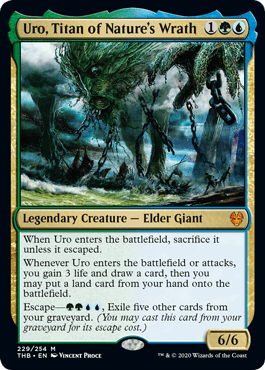
Uro has been a really interesting card to test out in Maverick. It’s by all means a very powerful creature, but it’s really common to hear from Maverick players that they’ve never wanted to GSZ for it. It’s a great card to naturally draw and allows you to use your graveyard as a resource. But it doesn’t really add anything to Maverick that it really desired.
Gaining three life doesn’t sound like much, but it can be the difference between dying and turning the corner against a True-Name Nemesis or Delver of Secrets. The double U in the escape casting cost can also be quite tricky, especially if you’re relying solely on your manabase and not mana dorks.
I’m happy to have it as a one-of in Maverick, but I still think Uro fits best in a Life from the Loam / Mox Diamond deck.
Fun Fact: If your opponent has a Leyline of the Void or Rest in Peace in play, your Uro isn’t as useless as you may think. You can cast Uro, then with its enter-the-battlefield trigger on the stack, you can return it to your hand with Karakas. This means you still draw a card, gain three life and put a land into play (if you have one) and then rinse and repeat over the following turns until your opponent has an answer.
What is a good starting point for picking up BANT Maverick?
Because BANT is based around a strong GW shell, it’s not too hard to move from straight GW to a BANT build. Here are some notable players (and me) who’ve picked up the deck and tinkered with a pretty standard 75.
Warming up before the stream I finished a league I had started last week with my Bant Maverick concoction, and got the 5-0, even beating Elves along the way. Turn 2 Oko is VERY good. Deck feels unfinished and untuned, but with very real potential. pic.twitter.com/xy0YkHK0Op
— fpawluszmtg (@fpawluszmtg) December 2, 2019
Went 4-1 with BANT Maverick taking its record to 16-4 😊.
Library over SFM was great
Not sure if Goose is > than BoP
Want 2nd Teferi but too exp.💰😰
4C Control 🏆🏆
Dredge 🖤🏆🏆
Sneak & Show 🖤🖤
Grixis Delver 🖤🏆🏆
4C Control 🏆🖤🏆
Back tonight for a league!#MTGLegacy pic.twitter.com/gQ3CMOIa87— DougesOnTwitch🎥 (@DougesOnTwitch) December 27, 2019
itsJulian’s version of BANT Maverick is where I would start as a new player looking to get into the archetype. A simple splash of just Oko, Thief of Crowns as the only blue card in the 75 accompanied by a single Tropical Island. I think there is an argument to add another Tropical Island or a Tundra to the deck to make sure you’re able to find your blue source early, but if you’re wanting to play Choke in the sideboard, one blue dual seems fine.
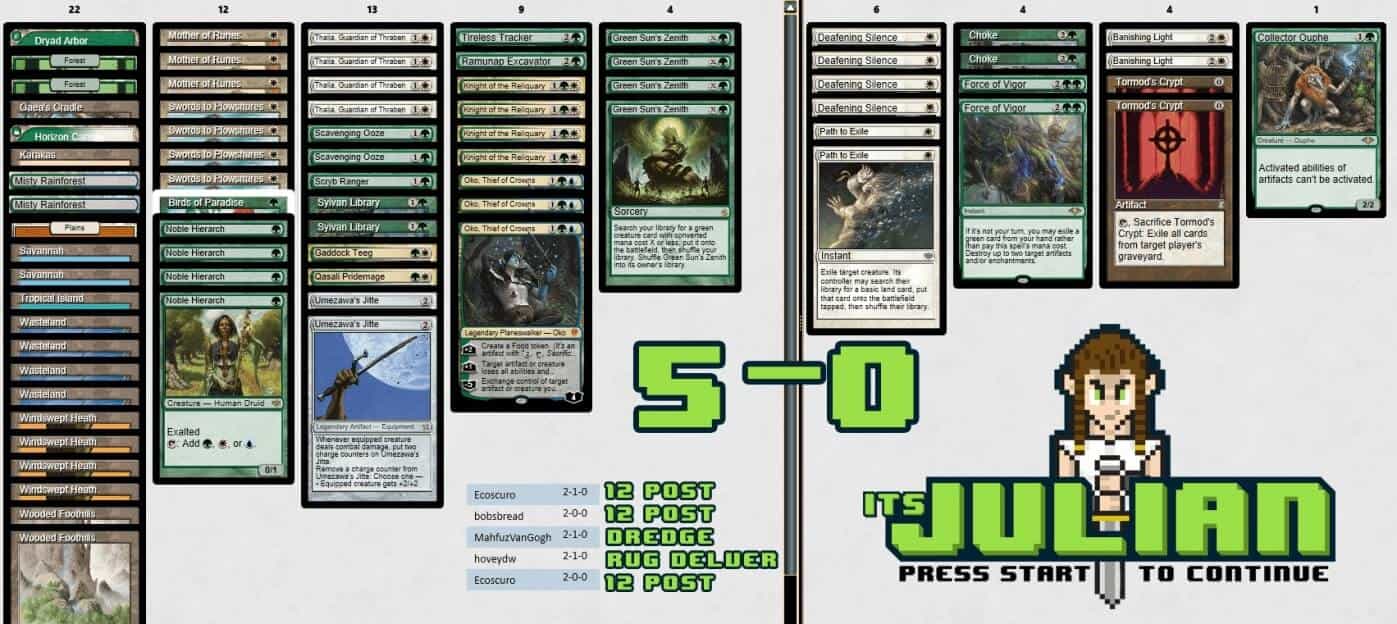
What does BANT give you access to?
Oko, Thief of Crowns

I think enough has been said about Oko, but I will say this may just be the sole reason to play BANT for some players. Maindeck planeswalkers have been becoming the norm in 2020, so why not play the best planeswalker in Legacy right now in your maindeck?
Teferi, Time Raveler
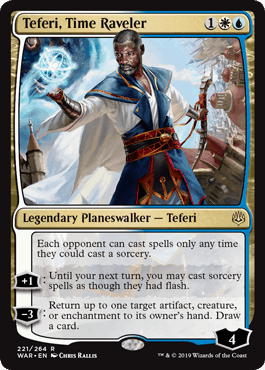
Have you ever wanted to cast an uncounterable Green Sun’s Zenith at instant speed? Teferi, Time Raveler isn’t a staple in BANT Maverick, but it does have have really nice upsides. Being able to replace itself straight is really nice, especially if you’re bouncing something like Knight of Autumn or a Sanctum Prelate you’re wanting to adjust. The tempo gain is also very relevant when playing Teferi to bounce the permanent your opponent just tapped out for.
Teferi lines up really well against Miracles as his static ability turns off any chance of countermagic or removal in your turn and an instant-speed Terminus. Outside of Council’s Judgment, Miracles doesn’t have a great out for Teferi other than combat damage.
Uro, Titan of Nature’s Wrath

Uro is just great value for its cost and allows you to have another late-game threat waiting to be recast from the graveyard. Although Maverick doesn’t run cheap cantrips to fill the graveyard, it’s not too hard for the deck to get to the escape cost of five other cards in the yard.
Uro can be very hard for non-white creature decks to deal with, mainly due to their lack of ability to exile Uro. It’s also not the greatest card to try to answer with your own Karakas, as your opponent is just getting more value as soon as they cast it again.
In my opinion, Uro fills the same slot that Tireless Tracker takes up in some lists. It provides you long-term card advantage, can keep your life total in a safe position, and also becomes a massive threat if left unanswered.
Meddling Mage & Lavinia, Azorius Renegade
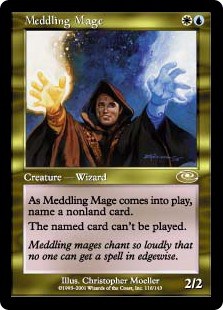

These are two of my favorite hatebears – 2/2 for two that disrupt your opponent’s strategy. Meddling Mage rewards pilots who not only know the metagame and how most decks are build, but also what to be most wary of at the time of cast. Recent printings of both removal and win conditions has made it a little harder to navigate the board with Meddling Mage, but I believe it’s still a very good piece of disruption.
Lavinia is a really cool card design. No longer can players cast their Lion’s Eye Diamond and Lotus Petals for free – hell, I don’t believe Belcher can even beat this. No more miracle Terminus or pitching Force of Will. Not only is Lavinia a great way to disrupt your opponent, it only disrupts your opponent.
This means you can still cast your Green Sun’s Zenith using manadorks or Gaea’s Cradle with Lavinia in play. Being legendary means she can be removed from the field by your opponent, but it’s always a way for you to protect her from removal.
Flusterstorm & Dovin’s Veto

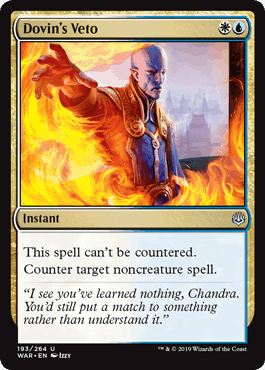
Maverick is a deck that has relied on board presence to disrupt opponents in the past. Thalia, Guardian of Thraben, Gaddock Teeg, Wasteland, Scavenging Ooze and other permanents all come together to allow Maverick to compete against some of the unfair decks of the format. Blue gives you access to something that Maverick players (outside of Punishing Maverick pilots who run Red Elemental Blast / Pyroblast) don’t have much experience with: fighting on the stack.
If you’re a little afraid of fast-combo decks, Flusterstorm might be what you’re looking for. If it’s cards like Oko, Thief of Crowns, Back to Basics or Terminus you’re more concerned about, you probably want to try the more flexible Dovin’s Veto.
Blue Elemental Blast & Hydroblast

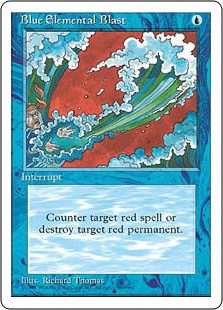
Blast effects are pretty appetising in Legacy, where they are usually very mana efficient. Being able to deal with threats like Dreadhorde Arcanist, Young Pyromancer, Chandra, Torch of Defiance or Sneak Attack with a single U mana is very powerful. Being able to counter a Burning Wish could be the breaking point for a combo player about to win the game.
I can see why the appeal for Hydroblast & Blue Elemental Blast has dropped off without Wrenn and Six in the format. But I still think these are great pieces of counter-magic / removal in the right meta.
What is BANT Maverick better and worse against compared to the other Maverick variants?
Control / Midrange strategies
This is a really tough question. I think Oko gives you much more game against grindy decks like the mirror, Death & Taxes and Loam strategies. It also gives you an edge against decks like Miracles, which may only have a single Council’s Judgment in their maindeck to deal with an Oko once it’s off the stack. Oko gives you a different angle of attack, not just the creature beatdown strategy Maverick is known for.
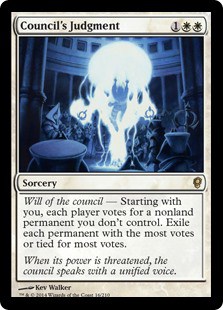
Oko shines as he builds further value over time against the decks that either don’t allow you to build out your board wide thanks to sweepers like Terminus and Dead of Winter or one for one removal like Grixis.
Combo strategies
Blue sideboard options help against fast-combo decks, but the deck still has the issue of not having much when on the draw. Deafening Silence is still the best T1 play against most combo decks, allowing you to then set up a board presence that applies both disruption and pressure.
Looking at the options for sideboard combo hate leads me to believe I’d feel a little better against decks relying on specific cards to win thanks to Meddling Mage and Lavinia, Azorius Renegade, as well as the counter-magic suite.
Flusterstorm is also a pretty big bonus at the cost of just a single U. However, without a manadork start, you may awkwardly be tapping out most turns to land permanents which are either disrupting your opponent or adding to the clock.
Go-wide strategies
I don’t think this deck’s colours help the matchup against go-wide strategies. This deck is a GW deck at heart, a version that doesn’t have great answers to multiple threats.
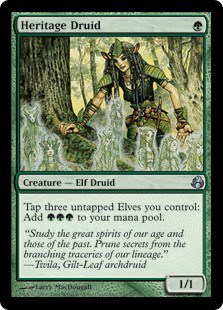
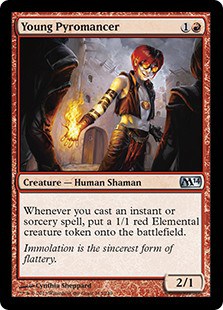
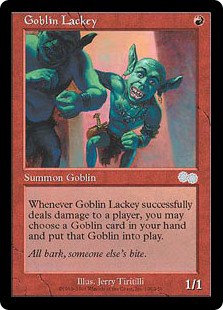
It heavily relies on Swords to Plowshares to make sure an Elves or Young Pyromancer opponent doesn’t blow the board wipe open and create a board state that can just beat down around your defences. Abzan Maverick at least has answers through Plague Engineer, Abrupt Decay, Assassin’s Trophy and Zealous Persecution.
Fair strategies
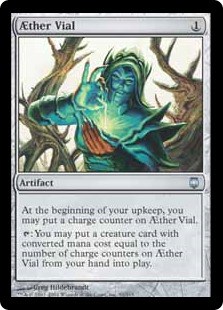

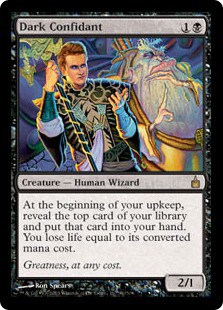
Maverick has a great fair matchup already, so the inclusion of Oko only solidifies the deck as a top-tier choice when coming up against other grindy decks. Death & Taxes, Loam, Lands and other creature-heavy decks that rely on one or two threats aren’t too hard for Maverick to overcome and dominate. We fall when these decks have the ability to build out their board and overcome our bigger defences.
November 2020 5-0 BANT Maverick League
References & Resources:
1. BANT Maverick Discord Channel
2. BANT Maverick MTGO Leagues Youtube Playlist
3. Noble Fish MTG The Source Forum
4. Julian Knab’s BANT GP Amsterdam Tournament Report
Conclusions:
Although BANT hasn’t been the most popular version of Maverick over the past few years, it’s currently a very strong and consistent build. If you’re on a basic GW version, you could be just a few Okos and a Tropical Island away from playing the deck.
Sadly, BANT doesn’t shore up some of Maverick’s traditionally bad matchups, but it does give you a refreshing take on the archetype. BANT has always been one of my favorite colour combinations in Magic, so being able to play a competitive build of the deck I also enjoy the most is fantastic.

